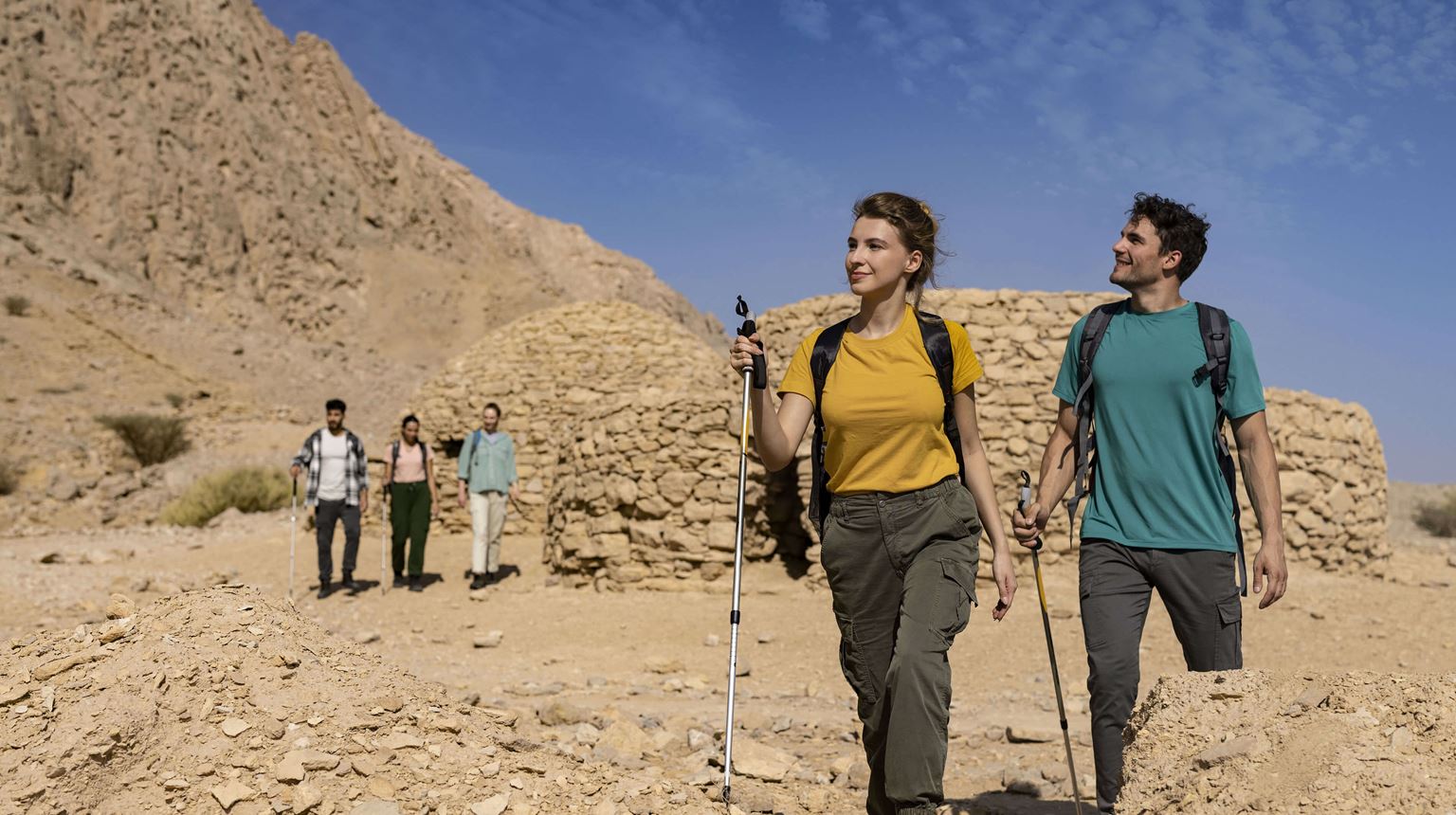
See All
Jebel Hafit Beehive Tombs
Jebel Hafit, Al Ain
On the foothills of Jebel Hafit mountain in Al Ain, you'll find remnants from UAE's Bronze Age. A series of tombs known as the Jebel Hafit Beehive Tombs, recognised by UNESCO in 2011, which provide a glimpse into 5,000-year-old secrets, hinting at a pivotal maritime trade era in the Arabian Gulf.
Early inhabitants of the Al Ain Region chose the northern and eastern slopes of Jebel Hafit Mountain to rest their dead. And, you'll find hundreds of tombs with artefacts with links to ancient Mesopotamia (modern-day Iraq), Iran and the Indus Valley (modern-day Pakistan and India).
Archaeological discoveries within these tombs have unearthed Mesopotamian pottery, ornate beads, including distinctive blue-green tubular beads, and locally crafted trapezoidal or square stone beads. Some other findings include spearheads and daggers from the second millennium.
Things to do at Jebel Hafit Beehive Tombs
While the Jebel Hafit Desert Park organises guided hikes to showcase these tombs, it also offers a myriad of immersive stays. Fancy a night near history? From camping beneath the stars, luxurious glamping tents, to authentic Bedouin-style tents, every traveller can experience millennia-old history comfortably. Or you can explore the area during the day, whether on a mountain bike, horse, or camel. Journey through this ancient land that has witnessed the ebb and flow of countless civilisations while celebrating the region's unique biodiversity.

Frequently Asked Questions
Why is Jebel Hafit tombs important?
The Jebel Hafit tombs are important because they represent evidence of inhabitants who lived here more than 5000 years ago. It also shows the beginning of the Bronze Age in the UAE and provides evidence of early maritime trade in the Arabian Gulf.
Why is Jebel Hafit famous?
Jebel Hafit Mountain is the tallest in Abu Dhabi and the second tallest in the UAE. Historically significant, the mountain is a great place for historians and adventurers alike as they can trek to explore the rich artefacts from a bygone era.